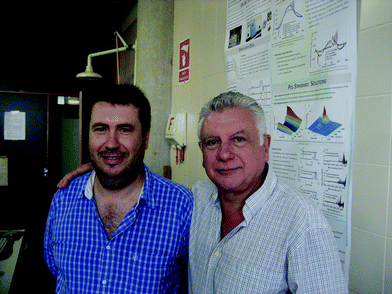Analytical methods for clinical diagnostics
S.
Garrigues
and
M.
de la Guardia
Universitat de València, Department of Analytical Chemistry, Faculty of Chemistry, Dr. Moliner, 50, 46100 Burjassot, Spain. E-mail: Salvador.Garrigues@uv.es; Miguel.Delaguardia@uv.es
Due to the aforementioned reasons, it was important to devote a special issue of Analytical Methods to the subject of clinical diagnostics in order to encourage the analytical chemist community to cooperate with medical centers to create the tools for well-documented decisions on both the detection of illnesses and the success of their treatments, being confident on the fact that, as much data as possible about the patients could be obtained in as short a period of time as possible so better actions could be done to protect human health.
Based on the objective to provide an updated vision of the problematics of clinical diagnostics based on analytical data, we invited active researchers in the field to contribute with their papers, about new tools available and the applications to specific problems, which vary from the detection of common illnesses to the confirmation of serious diseases.
Probably not all of the current efforts in clinical diagnostics through analytical data are well represented in this issue, but we are convinced that the document that the readers have in their hands will definitely contribute to attracting research laboratories to pay attention to the clinical applications of their chemistries, and the possibility to contribute to human health through the development of well validated analytical methods suitable for a fast and clear diagnosis.
Readers can find in this issue of Analytical Methods the possibilities of the use of nanomaterials-based electrochemical inmunosensors as advanced diagnostic tools, the use of vibrational spectroscopy techniques to determine biochemical parameters in serum, cancer diagnostics, a spectral histopathology study of metastatic brain cancer, and point-of-care diagnostics of methotrexate, there are several studies on determinations to be made in serum and plasma, and interesting contributions to a deep evaluation of the clinical results.
We would like to express our thanks to all the authors and research teams that have contributed to this special issue, and to the whole community of the Royal Society of Chemistry and its Analytical Chemistry team, especially the editorial staff and to Dr May Copsey as Managing Editor, for their help in preparing this special issue of a journal which increases its influence on the analytical community year after year.
| This journal is © The Royal Society of Chemistry 2014 |

